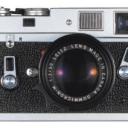Yahoo Answers is shutting down on May 4th, 2021 (Eastern Time) and beginning April 20th, 2021 (Eastern Time) the Yahoo Answers website will be in read-only mode. There will be no changes to other Yahoo properties or services, or your Yahoo account. You can find more information about the Yahoo Answers shutdown and how to download your data on this help page.
Trending News
Did Early 1970's Cameras Have Date Stamping?
My cousin and I are having a little argument about a snapshot in her family album. I think the snapshot was taken in 1970. On the white border of the picture is a date indicating 1971. She thinks that the date on the pinted photo blows my theory. However, I'm pretty sure the date stamp wouldn't have come from the camera but rather from the photo developer. My guess is that while some photo developers could date stamp if the customer so desired that most customers left that feature blank on the drop-off envelope and the developer would just use the current date for the stamping. In short, my question is: were there any consumer-level cameras available in 1970 that would have put the date directly onto the negative of the film in what would appear as the border of the developed photo? My guess is that the answer is 'no,' and that it's most likely that the developer put the date of development on the picture.
6 Answers
- mister-damusLv 79 years agoFavorite Answer
the earliest cameras I have seen are from the 1980's (I think some of the A-series canon cameras had a back that could be added to imprint the date, and my minolta hi-matic can also imprint the date).
As far as those dates on the white border, that has to do with the developing, not the camera. I know because I have those kinds of pictures (old family photos taken on 126 film; it's a square format). Nowadays they put the date on the back of the photo, but back in the 1960's and 1970's the date was put on the white border by the printer/developer.
Which is why if you reprint those negatives, the date will not be printed on the picture (you can hold the negative to the light and see if you don't believe me; you will notice that there is no date)
So you are correct (your cousin is mistaken)
Source(s): personal experience. - Camera GuyLv 69 years ago
Some 35mm SLR cameras had removable backs and a Date (or Data) Back could be put on. Nikon and Canon had these back then. The backs had very small lights that would flash the date onto the film it's self, showing up often in red on the print. There were also a few 35mm point n shoot cameras that could do this as well and some could even print a simple message that was pre-programmed in the camera and you could select 1 of a few internal messages..
.
Cameras that could print the time and/or date on the border of the negatives could not have this seen when printed in the normal fashion. To get the date on the border of the print was a job the photo finisher did at time of printing. Soon there after they went to printing the dates and other codes on the back side of the print..
Source(s): Been it the photo related industry since the 70's... - Anonymous9 years ago
In that argue I would be with you; if any camera at that time was able to imprint date on the negative, it'll be on the photo, not when printed at a side of it. It was a very common practice to put the printing date on the white border with dark characters. The only way to imprint date on a negative by means of light is on the sensitized area, not at the borders
- How do you think about the answers? You can sign in to vote the answer.
- Jeroen WijnandsLv 79 years ago
1971.. it's very early for a date imprint function.. not impossible but unlikely. A partial scan would easily settle it but for now I'm going to agree with that this was done after printing.





